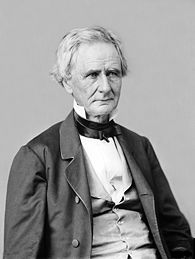On January 17, we put up this post:
As One Economic Bubble Bursts, Another Takes Hold
From the Wall Street Journal's Informed Reader blog:
The next bubble in the U.S. economy should be taking hold right about now, entrepreneur and investor Eric Janszen writes in Harper’s Magazine....
I can still remember how the market used to make me smile
What I'd do when I had the chance
Is get myself a cash advance
And add another tech stock to the pile.
But Alan Greenspan made me shiver
With every speech that he delivered
Bad news on the rate front
Still I'd take one more punt
I can't remember if I cried
When I heard about the CPI
I lost my fortune and my pride
The day the NASDAQ died
I poured my paycheck into Datek
Now my cash account's dry...
Clean Energy Redemption?
Industrial societies turn their citizens into image-junkies; it is the most irresistible form of mental pollution... Ultimately, having an experience becomes identical with taking a photograph of it.
—Susan Sontag
Eric Janszen, founder of iTulip, has caused quite a stir with his Harpers' article The Next Bubble: Priming the markets for tomorrow's big crash. Janszen's thesis is that the web and housing overvaluations were not an accident—the American economy must lurch from bubble to bubble to keep the "growth" party going, so another bout of irrational exuberance is required to make everything right now that the housing market has gone belly up.
What will the next economic bubble be? Janszen predicts alternative energy and infrastructure (Alt E&I) will be the next big thing, an explosion of economic activity and imaginary wealth that will make the tech and housing bubbles pale by comparison.
Alt E&I 1.0 — The Ultimate Bubble?
The U.S. is well into the formative stage1 of Alt E&I asset-price inflation (graph left) according to Janzsen, who defines the main economic drivers of the new bubble as 1) the need to recover from recession; 2) weakness in the dollar; 3) loss of petrodollar liquidity; 4) energy security; and 5) peak cheap oil. This last item may sound strange to some, but on second thought, oil is still pretty cheap compared to its true value. The coming price rises will propel dreams of renewable, cost-competitive electricity and substitutes for liquid fuels—in the case of plug-in hybrids (PHEVs), this amounts to the same thing.Alt E&I is also known as "cleantech". Janzsen does not mention anthropogenic climate change as a cleantech driver, but that goes without saying. Reducing carbon emissions trumps all the economic factors now that, after a 15 year struggle, the informed public is officially terrified by global warming. Janszen weighs in—
Improbably, [former Vice President Al] Gore threatens to become the poster boy for the new new new economy: he has joined the legendary venture-capital firm Kleiner Perkins Caufield & Byers, which assisted at the births of Amazon.com and Google, to oversee the “climate change solutions group,” thus providing a massive dose of Nobel Prize–winning credibility that will be most useful when its first alternative-energy investments are taken public before a credulous mob.
In the cleaner and greener world to come, you will recharge your PHEV/E-85 car or fill-up your hydrogen fuel cell car by drawing electricity (or making hydrogen) from a grid powered by solar photovoltaics, wind turbines, ocean waves and geothermal energy. Unfortunately, these alternatives will likely replace at most 15% of current electricity consumption by 2030, and won't meet peak demand spikes at all, so we will need clean coal (a.k.a. NeverGen) and more nuclear reactors to provide the juice when everybody turns their air conditioners and compact fluorescent light bulbs on at the same time during each summer's killer heat wave.
Reality aside, what could be better than the cleantech boom? Abundant renewable energy, no serious interruptions to shopping, saved from the perils of global warming, life goes on! This is the promise of Alt E&I 1.0, the cleantech revolution....MORE*In April '07 we commented on the thinking of the Markets Editor of WSJ.com:
Indexes, ETF's and Global Warming
A few weeks ago Mark Gongloff had a post at the WSJ.com's EnergyRoundup with the cautionary title "Alternative Energy’s “Cover” Moment?". He ended the post with this humble line "And that could be one reason why the alternative-energy boom might continue for a while after all. Or at least, there’s a 50/50 chance of it."...
...So what does this all mean? I agree with Mr. Gongloff, I think we've got a ways to go before a top in clean-tech and alt-energy. Why isn't the "Cover Moment" or BTK experience operative this time, even though we have another half dozen indices and ETF's since Kang did his piece?
No, it's not because "It's different this time"! It's because the Wall Street marketers are faster to recognize a fad and can create product faster than ever before. The covers and funds and indices hit the market earlier in the cycle. So look for something like this: "INTERNET.COM'S ISDEX, THE INTERNET STOCK INDEX, BREAKS 1,000, A GAIN OF 1000% IN LESS THAN FOUR YEARS"
That tout was dated March 10, 2000. The Nasdaq closed that day at 5048.62, it's all-time closing high.






